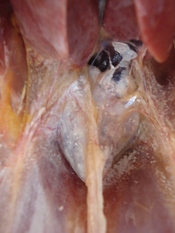Kidney damage is emerging in laying hens

Kidney damage heavily influences the welfare of laying hens and eventually may even lead to mortality. This can be avoided, however. The best way to prevent the formation of kidney stones is supplementing poultry diets with acidifiers.
By Dr Hicham Sid and Dr Amine Fettah , University of Blida, Department of Veterinary Sciences, Algeria
Kidney damage (urolithiasis) is a degenerative renal disease involving urolith formation in the ureters of laying hens. It may be associated with multiple etiologies (high dietary calcium, low dietary phosphorous and nephropathogenic IBV). Kidney lesions and visceral gout are among the most commonly diagnosed causes of mortality in poultry. The kidneys are involved in a wide range of essential functions. Therefore it is not surprising that kidney dysfunction can cause profound problems for the poultry industry.
Urolithiasis is defined as an acquired degenerative kidney disease of pullets and laying hens involving focal mineralisation of the kidneys, progressive obstruction of the ureters by uroliths (kidney stones), and kidney atrophy of the site of ureteral obstruction combined with compensatory hypertrophy by the undamaged portions of the kidneys. This condition is associated to multiple etiologies; it is primarily observed in layer hens and induces an increased mortality and a decrease in egg production. Death occurs due to uricemia when functional kidney mass is insufficient to sustain normal metabolism.
Signs and examination
The most common signs are dehydration, pale combs and depression. In some cases, layers are emaciated with atrophy of the breast and leg muscles. Several birds have marked swelling and reddening of the feet. High mortality is observed between 19 to 35 weeks old. Total flock mortalities ranging between 2% and 50% have been documented.Mortality is mostly associated with severe kidney atrophy and obstruction of ureters. Many birds have unilateral or bilateral urinary involvement with either severe atrophy (Photo 1) or irregular hypertrophy of one or several lobes of the kidneys. The ureters are markedly enlarged with irregular white uroliths (Photo 2). The urolith enlarges to fill an entire ureter, causing the entire obstructed kidney to degenerate.
Eventually only the ureter swollen with fluid and enclosing a large urolith (up to 5 cm long) remains. The unaffected kidney becomes obviously enlarged due to compensatory hypertrophy. Birds can survive and remain productive as long as two of their six kidney divisions remain functional. Ureteral blockages by uroliths and renal atrophy and hyperplasia are present with diffusely enlarged and pale kidneys. The tibiotarsal joints are affected by gout; birds have extensive uric acid deposits throughout the visceral organs (Photo 3), peritoneal membrane, and subcutaneous tissues.
Causes of urolithiasis
Supplementing poultry diets with “acidifiers” (ammonium chloride, ammonium sulphate) is useful to reduce the urine pH and prevent kidney stone formation; it may also increase water consumption, urine flow and manure moisture. Dietary supplementation with 0.5% ammonium sulphate has become the treatment of choice for dissolving existing uroliths and preventing new uroliths from forming in flocks experiencing an outbreak of urolithiasis. The treatment must continue for the entire remainder of the production cycle. Otherwise, uroliths will begin to form once again in hens with damaged kidneys, and within two weeks after acidifier withdrawal substantial urolithiasis mortality can be expected to resume.












